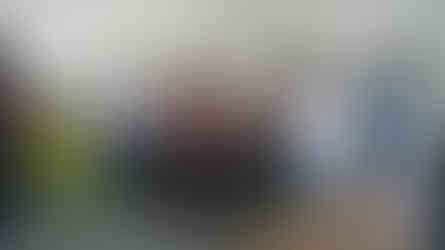Urban Pastures
- Mar 12, 2016
- 4 min read
Updated: Jun 6, 2024
DATE: March 2016
PARTNERS: Krishna Byregowda Office, Goethe Institut / Max Mueller Bhavan, Bruhat Bengaluru Mahanagarike Palike & Jaaga.
COMMUNITY: Commuters, Bus conductors, drivers & residents.
Using the framework of the urban-rural rhetoric, we conceptualized a week-long work- shop with 6 international and local photographers, evolving the idea of 'parallel-play'. The work produced was intended to explore the idea of 'galleries on the street'; specifically to be displayed at newly built bus shelters in North Bangalore.
Jaaga has been approached by the office of Minister for Agriculture, Karnataka State Government, to partake in a pioneering public art project. The vision of this project is to introduce contemporary art at 40 new bus shelters being installed within the North Bangalore constituency. Jaaga DNA has chosen to work with photography as a medium on this project for a few reasons. Foremost among them is that photography is art that is accessible across different sections of society, all of whom will be viewers of the work. In addition, photography is a familiar medium in the space of the bus shelter held within the advertisement hoardings, thus the play of the same medium, only this time presented as art is a subtle counter-statement. The project presents a tremendous opportunity for art to occupy a rather unusual, public canvas within city space. This is a space that is accessible visually to all strata of society, with a multiplicity of audiences from urban travelers waiting for a bus, to traffic that drives by at various speeds and passersby. Bus shelters are also spots of social gathering and interaction, with mothers dropping their children off to school, friends meeting to ride together, and strangers commiserating over delayed buses. They tend to have a mini ecosystem around them depending on their location – with street vendors who make use of the opportunity of a captive audience and people just taking a break from the urban bustle. Bus shelters hold within anywhere from 20 to 50 people at a time who wait an average of 15 minutes for a bus. In a typical shelter, loud advertisements shout out to the city dwellers, hawking the allure of the next point of sale. How can this real estate be taken over by engaging public art? How can this art respond to both traffic whizzing past, and the commuter who has fifteen minutes? This Public Private Partnership (PPP) is conceptualized as a gallery on the streets, to help hurried city dwellers stop momentarily and look, think, ponder and engage. With a carefully chosen theme and framework, the potential impact of this work would be both dramatic and change-making at scale.
Theme Inspiration
We selected an inspirational essay to be the starting point for this project and the 6 photographers.
Italo Calvino: Invisible Cities – Continuous Cities
“You reproach me because each of my stories takes you right into the heart of a city without telling you of the space that stretches between one city and the other, whether it is covered by seas, or fields of rye, larch forests, swamps. 1 will answer you with a story. In the streets of Cecilia, an illustrious city, 1 met once a goatherd, driving a tinkling flock along the walls. “Man blessed by heaven,” he asked me, stopping, “can you tell me the name of the city in which we are?” “May the gods accompany you!” 1 cried. “How can you fail to recognize the illustrious city of Cecilia?” “Bear with me,” that man answered. “I am a wandering herdsman. Sometimes my goats and I have to pass through cities, but we are unable to distinguish them. Ask me the names of the grazing lands: 1 know them all, the Meadow between the Cliffs, the Green Slope, the Shadowed Grass. Cities have no name for me: they are places without leaves, separating one pasture from another, and where the goats are frightened at street corners and scatter. The dog and I run to keep the flock together.” “I am the opposite of you,” I said. “I recognize only cities and cannot distinguish what is outside them. In uninhabited places, each stone and each 152 clump of grass mingles, in my eyes, with every other stone and clump.” Many years have gone by since then; I have known many more cities and I have crossed continents. One day I was walking among rows of identical houses; I was lost. I asked a passerby: “May the immortals protect you, can you tell me where we are?” “In Cecilia, worse luck!” he answered. “We have been wandering through its streets, my goats and I, for an age, and we cannot find our way out. . . .” I recognized him, despite his long white beard; it was the same herdsman of long before. He was followed by a few, mangy goats, which did not even stink, they were so reduced to skin and bones. They cropped wastepaper in the rubbish bins. “That cannot be!” I shouted. “I, too, entered a city, I cannot remember when, and since then I have gone on, deeper and deeper into its streets. But how have I managed to arrive where you say, when I was in another city, far far away from Cecilia, and I have not yet left it?” “The places have mingled,” the goatherd said. “Cecilia is everywhere. Here, once upon a time, there must have been the Meadow of the Low Sage. My goats recognize the grass on the traffic island.”





















